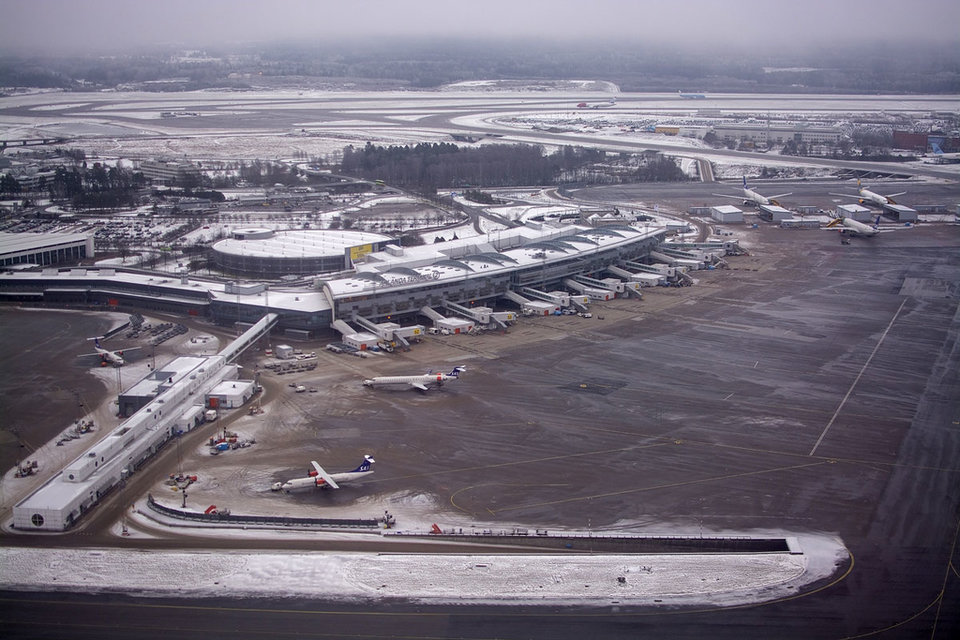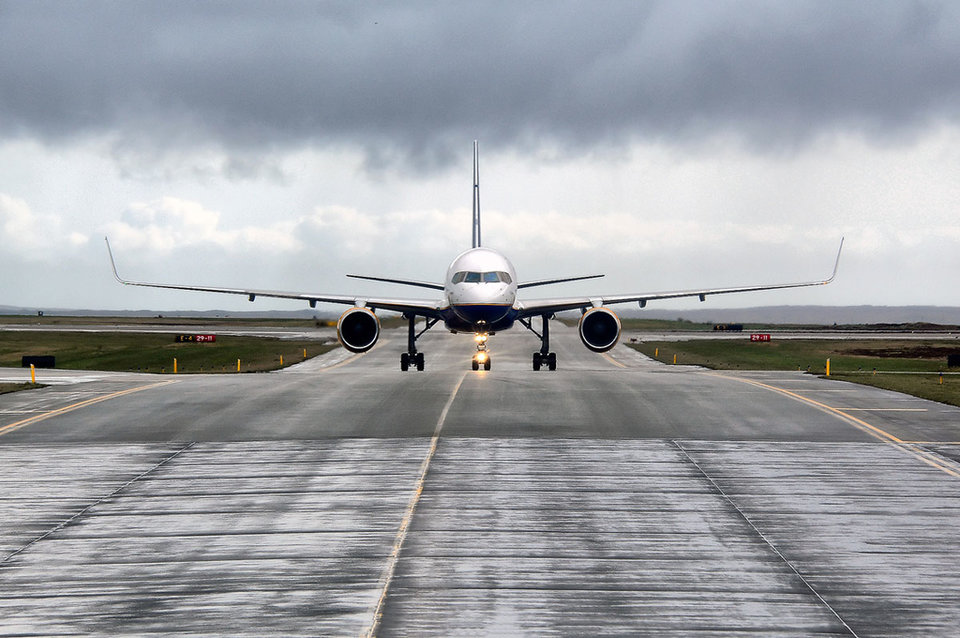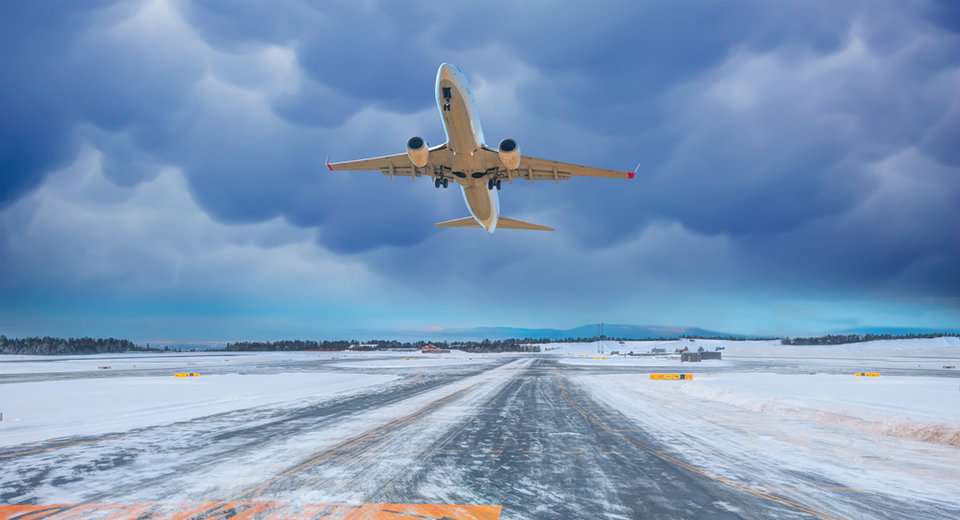Winter Operations
Airport winter operations:
will heated runways ever take off?
As the Northern Hemisphere heads into the summer months, the challenges of winter air travel quietly fall away. However, winter weather can often be anything but quiet. Andrew Tunnicliffe talks to the industry about the challenges winter poses and asks why heated runways have failed to take off.
“Delayed”: it’s a word that fills even the most laid-back traveller with dread. If you’re awaiting your flight in the departure lounge of Detroit Metropolitan Wayne County Airport, it’s a word you will see on the boards a lot, particularly during the winter months. In fact, Detroit Airport is said to be one of the US’ worst airports for weather-related delays during December, January and February.
Partially encircled by the Great Lakes, this midwestern city is routinely assaulted by some of the country’s harshest winters, with temperatures hovering around freezing for much of the season. It stands to reason passengers will be delayed, but why is this so?
Airports are well versed in countering inclement conditions, making use of tried and tested practises, machinery and chemicals. Regulations are also geared towards safe and efficient operation of airports in this kind of scenario, but despite all the effort and planning, sometimes even this isn’t enough.
Image:
The winter runway challenge
“Firstly there is the obvious physical challenge presented by ice, slush, snow and rain to the friction of the runway, impacting on the braking and acceleration performance and, therefore, the safety of aircraft using them,” says ICA Europe’s safety, capacity, ATM and single European sky manager Aidan Flanagan. “Then, of course, the action required to manage the runway impacts on operations. Building in snow clearance to the schedule impacts airfield operations and turnaround times, creating delays. As delays build up in airline schedules, cancellations become a necessity.”
Heathrow Airport head of safety and assurance Ian Witter says part of being prepared is having the right team and access to the very best resources and information. “Airports need extensive equipment and trained teams to deal with snowfall," he says. "Then, of course, there is the need for accurate forecasts to be able to plan and make timely decisions.”
“Ice is best dealt with by prevention,” adds Flanagan. “Using chemicals which lower the freezing point of water on the runway prevents the formation of ice and means the runway is only wet.”

Arlanda Airport, Sweden. Image: Artesia Wells / Shutterstock.com
Chemicals used today include so-called formates, compounds of either sodium and formic acid (solid granular material), or potassium and formic acid (liquid de-icer). They are applied to the moist or wet surface before freezing sets in, says a spokesperson for Iceland’s Keflavik Airport. Keflavik Airport, like others in that part of the world, faces unique challenges when it comes to runway management during the winter.
“Maritime climate in the Nordic countries causes a wide spectre of weather situations that may lead to difficult runway conditions. Different combinations of wind and precipitation, air and surface temperatures, humidity and cloud cover, call upon a dynamic winter service strategy in those regions,” explains Keflavik’s spokesperson.
Airports need extensive equipment and trained teams to deal with snowfall
The reality of heated runways
However, despite the industry’s best efforts, there is an acceptance that weather-related delays are inevitable. One area that has had some interest is the potential to heat runways, reducing the need for the Herculean clearing efforts and therefore cutting delays. If we can heat our sports fields to ensure the show goes on, why can we not do the same for critical infrastructure?
In reality, however, the two are very different. Although there are many proposals and even a few examples out there, heated runways have not yet enjoyed the popularity you would immediately assume they should. A heated runway is largely self-explanatory; heat is supplied the length of the runway and taxiways to keep them above the point of freezing. Through a network of conductive materials embedded into the tarmac, or cables or pipework supplying hot water, heat is generated and pushed to all areas, keeping runways and taxiways open and the airport moving.
In theory, a heated runway would remain clear of ice and snow; but that isn’t strictly the case says Keflavik’s spokesperson: “The management of meltwater from the heated surfaces is also a challenge and may cause safety issues if not properly designed. Additionally, there are weather situations when a heated surface would, on the contrary, cause safety hazards and increase the need for mechanical snow removal.”

Image: Keflavik Airport, Iceland.
These are not the only challenges involved with heated runways. The main one is the amount of power needed to keep runways heated and the associated costs according to Flanagan, who says the price of installing and operating such a system would far outweigh any potential benefit. Some estimates for installation alone have topped £150m at the world’s biggest and busiest airports.
It’s a view shared by Keflavik’s spokesperson, who says the question must be analysed in terms of construction, maintenance and operation. “The cost of operational energy demand will, in the long run, probably exceed potential savings in de-icing chemicals and mechanical snow removal, and only provide a marginal safety benefit. We are not aware of any aerodrome utilising heated runways for snow and ice control.”
The spokesperson adds that even if it were financially viable, it wouldn’t significantly alter winter operation planning, which would likely still require ploughing.
The management of meltwater from the heated surfaces is also a challenge and may cause safety issues if not properly designed
Is there a future for heated runways?
To address some of these issues, researchers have been looking at alternative sources of power. Joseph Daniels and Ernest Heymsfield of the University of Arkansas set out to develop a solar-powered runway heating system, work that won Daniels the Recognizing Aviation and Aerospace Innovation in Science and Engineering award in 2018.
Using photovoltaics, two different systems were developed to supply underground heating for airport pavements. From this research, Daniels and Heymsfield concluded there was the potential for use of solar power to help in winter operations; however, it did still pose cost challenges, something the researchers suggested could be mitigated if systems were used throughout the year and incorporated a water heating system for wider use at the airport.
While interesting, these findings were partly supportive of the aviation industry’s reluctance to embark on such substantial projects. Asked whether he thought the use of these systems would become commonplace, Witter said he simply couldn’t see it, practically or economically. Keflavik’s spokesperson agreed, saying: “Even if theoretically possible, depending on the climatic situation, we believe that the overall cost of heated runways is probably not worthwhile.”

No matter where you are in the world, or where it is you hope to be landing, the weather will play a part. Thankfully more often than not it’s when we land that our thoughts turn to the conditions, for the traveller at least. For airport operators and their teams, however, they take more than just a passing interest in what’s happening now and what can be expected in the hours and days to come.
That doesn’t look like it is going to change – even if heated runways were to make a significant breakthrough. While they sound like a miracle solution, the truth is they aren’t – at least not yet.
Even if theoretically possible, we believe that the overall cost of heated runways is probably not worthwhile